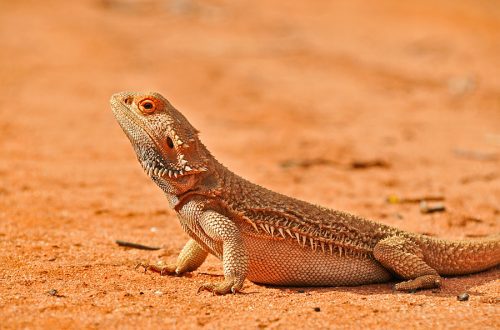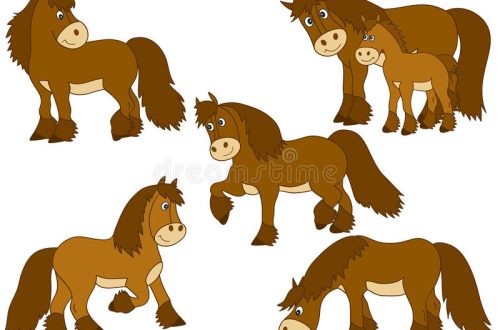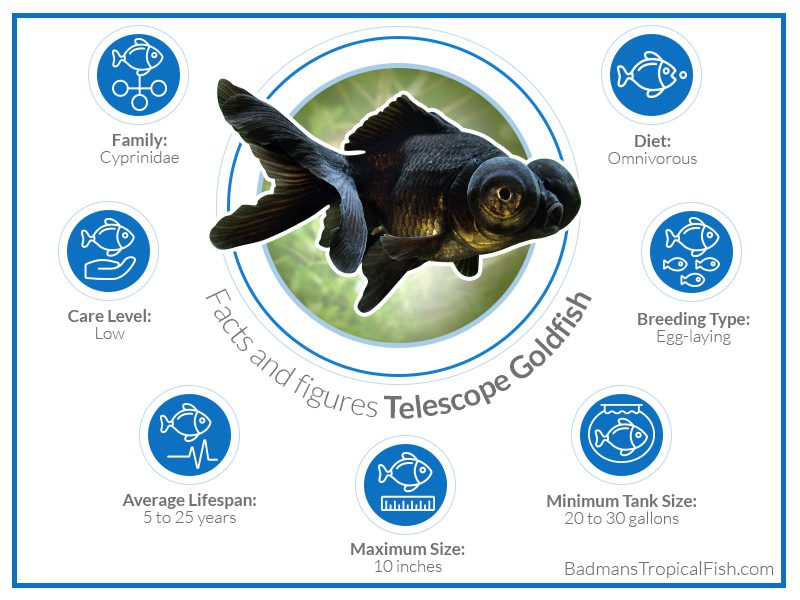
Telescope fish: types, content, diseases, reproduction
The telescope fish is also known by the mystical name “dragon’s eye”. Asians have long known about this interesting fish, but Europeans got to know her only in the second half of the century before last. Let’s get to know her today.
Contents
Telescope fish: what it looks like and its types
telescope fish very similar in appearance to the veil tail – so, her torso is swollen, similar to egg shape. Dimensions fluctuate within 10-20 cm. Fins are short, ribbon-like or a skirt. Scales as it happens in stock, and sometimes missing. But of course, eyes are especially prominent – bulging in spheres, cones, cylinders. Achieve they can even be 5 cm long, but look in different sides or slightly forward.
А Now let’s look at the types of telescopes more in detail:
- Black Moor – This black telescope fish has such a rich color that it becomes like a piece of coal. However, some other shades may well be observed – often they appear over time. But the predominant color is still black, both on the body and on the fins and tail. By the way, fins with a tail often resemble a veil, and the dorsal fin is a sail. This type of telescope is considered the most common and in demand.
- Panda – as the name implies, its colors are black and white. They form spots that can be called symmetrical. The body does not have scales at all, it resembles velvet in appearance and touch. Interestingly, with age, the black shade of the spots can be replaced by some other.
- The telescope is orange – and this fish is monophonic. Orange color can have different shades of shades, but in any case, spotting or banding is not observed. Often among the orange individuals there are so-called “stargazers” – fish, whose eyes seem to look up.
- The chintz telescope is an incredibly elegant motley fish. Its main tone is silver-white. Spots of various sizes and any shades are whimsically flaunted on it. It can be black, orange, red, yellow spots. Sometimes they are huge for half the body, and sometimes they are completely miniature. It is unlikely that you will be able to find two identical chintz telescopes.
- The red look is notable for its bright color, which immediately attracts all eyes. Fins and tails can be different – and very short, and reminiscent of skirts, ribbons.
- Forty telescope – the body of this fish is white, but the fins and tail act as a kind of contrast. Namely, they are black. As for the very shape of the fins and tail, then there are no special restrictions.
- Tiger look – but here the stripes are already present. And it doesn’t have to be orange and black. Various color combinations are allowed. The main thing is that some of them are lighter, and some are darker.
- The lion-headed telescope is perhaps the most controversial type. It is distinguished by the fact that there is a certain growth on the head, which is somewhat reminiscent of a lion’s mane. However, due to this growth, the eyes of the fish are much smaller than those of its relatives. Therefore, some researchers propose to attribute the lion-headed telescope to some other variety of goldfish.
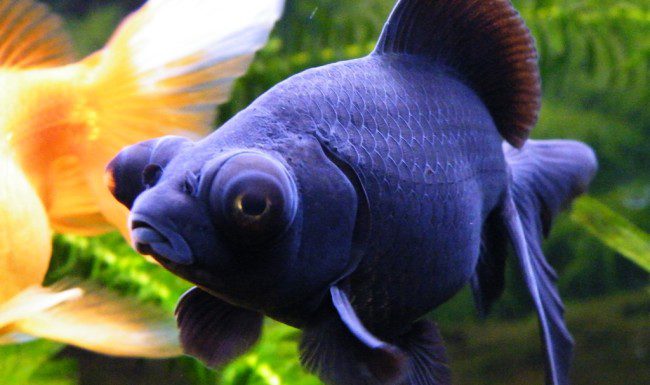
Keeping a telescope fish: talking about the intricacies
А Now let’s talk about how to keep all these beauties
- Than The bigger the aquarium, the better! For example, ideal to buy an aquarium with a capacity 300 l. Telescopes love space. More moreover, it is believed that the more capacious aquarium, the larger they grow these fish. If it is not possible to buy 300 liter pet housing purchase at least an 80-liter, but with taking into account the fact that it will live just a couple of fish.
- Temperature water should not rise too much high. It is believed, that the ideal indicator is from 18 to 22 degrees. Some suggest raising the temperature up to 27 degrees, but in this case it should be aware that the color of the fish may fade. As for the acidity of water, it is worth set the indicator in the range of 6-8. Rigidity is acceptable in the interval 8-25. Filtration and aeration should be good, because I love telescopes clean water, but at the same time capable pretty messy. But strong they do not like the flow, because they are poor swimmers. Weekly it is necessary to replace 1/3 of total volume of water. It is recommended to pour the water that was defended though within 3 days.
- Telescope – not deep water fish, but she loves to rummage through ground. In nature, by the way, telescopes almost never meet that, in shallow ponds. Recommended buy a large one for these fish soil, as small is easier to swallow while digging.
- Speaking about how much telescopes live, It should be noted that they are long-livers. And this is 10, 15, or even 20 years! But of course, this is only possible with careful pet care. A business is that telescopes are very easy injure their huge eyes – and this means that the scenery must be chosen wisely. That yes, sharp corners, excessively protruding there shouldn’t be any details. Pebbles on this the same reason should be smooth. By the way, an abundance of decor would still interfere with the fish move freely, because less is better.
- Better plant plants instead of grottoes and shells, snags. True, and get involved in them it does not follow. Optimal arrangement of water jungle somewhere at the back wall, otherwise the telescopes will have little space for maneuvers.
- That As for food, then telescopes boldly can be called unpretentious fish. Many owners like to regale their pets with ready-made food for goldfish which is good option. This food is better than natural, as it is light and hangs in the water column. With heavy feed, things are worse, so how he is lost among the soil, and the fish they simply don’t see it. By the way, despite on huge eyes, vision in telescopes bad enough. А several times a month recommended pamper your pets with protein. And best suited for this purpose bloodworm, brine shrimp, daphnia, coretra. love telescopes and plant foods, as which scalded leaves are suitable nettle, cabbage, lettuce. Optimal feed telescopes twice a day in small portions. And since these fish prone to obesity, not bad once a week arrange for them fasting days.
compatible fish telescope with other aquarium inhabitants
С who can get along with a telescope, and with whom – No?
- More total telescopes contain with others goldfish, and this is the right decision. And it’s best to have neighbors short-bodied. And peaceful than just different goldfish. With more large and aggressive relatives telescopes will lose in the fight for food. After all, we remember that they see badly. И until they find food, too active and fighting fish will intercept it. Therefore, veiltails, orandas, water eyes are great neighbors.
- Sometimes chic tails and fins of telescopes attract other fish as an object for chewing. With such addictions differ, for example, barbs, rainbows, cichlids, neon, thorns.
- Consider costs and the need for water a certain temperature. So, telescopes are not heat-loving fish, so next to tropical fish they will be feel uncomfortable.
- That As far as plants are concerned, it is best choose plants with wide and dense leaves. Otherwise, thinner and more delicate algae telescopes quickly eat. It is also important that the root system was well developed, because telescopes, as we remember, they love to dig in the ground. That is, the egg capsule is best suited, Elodea, Aponogeton, Sagittaria, Bolbitis, hygrophilous.
- Snails are excellent neighbors for telescopes. They are great remove plaque from the walls of the aquarium, and from the surface of plants. But telescopes eat a lot and dig in the ground no less – that is, they are still dirty, although they love clean water. The snails just help bring the water home back to normal.
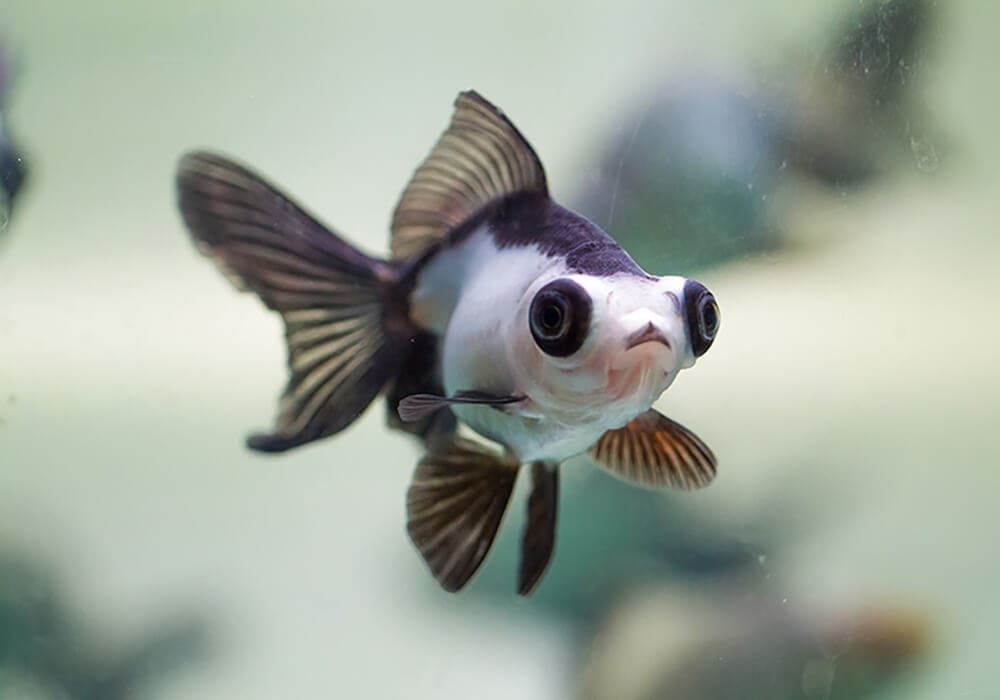
Fish breeding telescope: what you need to know
What kind nuances exist in the matter of breeding telescopes?
- For first you need to learn to determine the gender fish, and with this there are big problems. The fact is that males and females at telescopes normally indistinguishable neither in size, nor in color or structure. And only during spawning appear differences: in females, the body is rounded, and in males in the area of uXNUMXbuXNUMXbthe gills and the head as a whole spots form. These spots are white and as if bumpy. So definitely it is worth buying a flock of telescopes at once, so that they are sure to be in it and boys and girls. А at the end of spawning it is quite possible remember which of the fish is which, if you pay attention to their individual peculiarities. These fish reach sexual maturity. by two years old.
- In advance it is worth preparing a spawning ground. Aquarium for this purpose should be wide so that the water level was low. The preferred volume is 30 liters. Necessarily good aeration is required. Temperature water should be raised to 24-27 degrees, lighting is also better done more bright. Javanese should be laid at the bottom moss, and on top – a net so that the fish do not ate caviar. The mesh is best fixed at a height of 2 cm above the bottom.
- Как only the fish showed that they were ready for spawning, you need to choose one female and several males. They sit down separately. Extremely it is desirable to do jigging in the morning – then the caviar throwing and its fertilization.
- Literally at one time telescopes are able to sweep about 2000 eggs! However, not all of them will be viable, of course. How only the caviar will turn white, it is worth it carefully remove and discard.
- Process fertilization takes 3 to 5 days about. After that, the fish is to transplant from their offspring, since their parental instinct is perfect not developed.
- After The hatching of the larvae will begin in 2-5 days. After a couple of days, fry will appear. Feed them with ciliates. Gradually You can also add dry food. By the way, don’t worry if the kids don’t have large eyes – almost six months will come before they show up.
Telescope Fish Diseases: analyze the main
Than can telescopes get sick?
- Cold – occurs due to sudden changes temperatures. Manifested in change type of skin – the abdomen becomes earthy, and the scales may even flake off. The temperature in this case is recommended increase to 26-27 degrees. Even special It’s okay to use a heater.
- Inflammation in the swim bladder – in the common people this affliction is known as “inversion”. The fish floats either sideways up, or tummy. Speaking of the stomach: it swells, and the spine is noticeably curved. И In this case, it is highly desirable to increase temperature, but already up to 28 degrees. It is also worth starving for 3 days.
- Stress – it is found even in fish. Cause may be the wrong temperature water, selection of unsuccessful neighbors, transplanting to another aquarium. Rybka at such moments presses the fins too close to the body. In this case you just need to get rid of the pet source of stress.
- Oxygen starvation happens when aquarium has too many fish or when the temperature is too high. You can recognize such starvation by the fact that that the telescope is raised too often to the surface of the water for swallowing air. In this case, it is worth planting pets, lower the temperature, spend thorough aeration and cleansing of debris.
- Obesity occurs, as noted earlier, often. The owners are trying to feed the fish are full, and telescopes do not know the measure at all. This problem is manifested by bloating stomach, constipation, apathy. cure pet can be starvation and subsequent diet food.
- Scabies is an infection caused by bacteria. Rybka at such moments it scratches on pebbles slime white.
- Dropsy is an infection that affects kidneys. The fish swells, and noticeably.
- Fungus – occurs due to poor quality water, and often enough. Fish most often at this time lies at the bottom, and her body is covered with growths of gray or white tint. In that case, water needs to be completely changed and used antibacterial drugs.
- vermin – often the reason for their appearance is poor quality food. That’s why, if the food is live, it is recommended Freeze fish before serving. AT such minutes the telescope is completely refuses food, becomes lethargic, dark spots appear on it. It is necessary to give drugs getting rid of parasites.
- Problems with eyes – unfortunately, this problem, as we have already written, occurs in telescopes Often. And not only because of injuries, but also due to dirty water. On the eyes turbidity or whiteness appears specks.
Gold fish attracts the attention of aquarists quite a long time. And therefore the variety of its breeds is constantly expands – one of these breeds and is an aquarium telescope fish. She is unique in appearance. and in terms of care, but deserved a huge love among fans of the water world.




